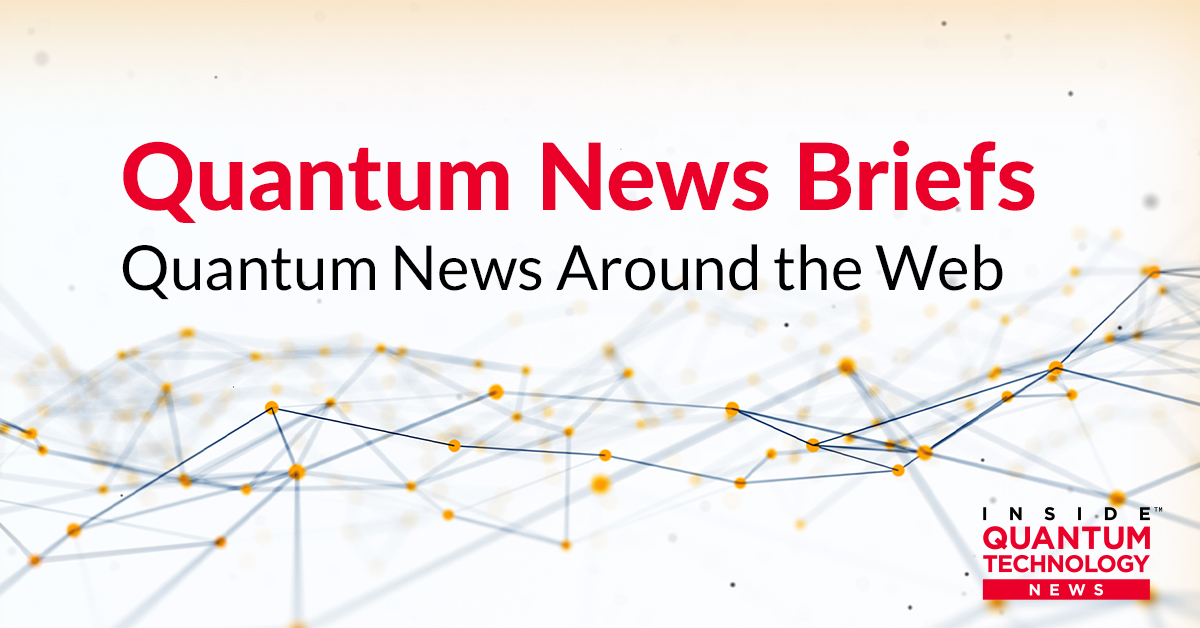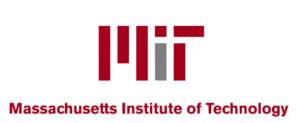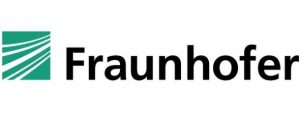
Quantum News Briefs September 26:
 The US’ announcement of the finalized (and clarified) guardrails around its multi-billion-dollar CHIPS and Science Act include provisions specifically aimed at quantum computing. Quantum News Briefs summarizes the September 25 article by Francisco Pires in Tom’s Hardware.
The US’ announcement of the finalized (and clarified) guardrails around its multi-billion-dollar CHIPS and Science Act include provisions specifically aimed at quantum computing. Quantum News Briefs summarizes the September 25 article by Francisco Pires in Tom’s Hardware.
The guardrails around the CHIPS and Science Act, as issued by the Department of Commerce through NIST, seek to “prevent funding provided through the program from being used to directly or indirectly benefit foreign countries of concern.” It’s through this lens that the Department of Commerce has classified semiconductors as “critical to national security,” subjecting them to increased scrutiny due to their obvious ability to increase a foreign country of concern’s technological level.
And apparently, “semiconductors designed for quantum information systems” make the cut. Other clarifications include “Semiconductors designed for operation in cryogenic environments (at or below 77 Kelvin), which includes sensors for quantum computing and superconductor research. “Silicon photonic semiconductors,” too, have quantum computing applications. “Semiconductors utilizing nanomaterials, including 1D and 2D carbon allotropes such as graphene and carbon nanotubes” also make the cut.
The questions around sanctions, of course, almost always relate to how effective they are. Do these sanctions slow down the “opposition” more than they slow us down? In the case of quantum, the case isn’t as clear-cut as one might expect. But then again, we’ve been seeing sanctions falling short of their intended, projected effects for a while now. There are always back-alleys and gray markets. And there’s also the ability to simply cram and outinvent the US’s restrictions, which China seems to be doing in some ways. Click here to read Pires article in-entirety.
MIT researchers demo new qubit circuit that enables quantum operations with higher accuracy
 MIT researchers demonstrated a novel superconducting qubit architecture that can perform operations between qubits — the building blocks of a quantum computer — with much greater accuracy than scientists have previously been able to achieve. Quantum News Briefs summarizes the September article by Adam Zewe.
MIT researchers demonstrated a novel superconducting qubit architecture that can perform operations between qubits — the building blocks of a quantum computer — with much greater accuracy than scientists have previously been able to achieve. Quantum News Briefs summarizes the September article by Adam Zewe.
They utilize a relatively new type of superconducting qubit, known as fluxonium, which can have a lifespan that is much longer than more commonly used superconducting qubits.
Their architecture involves a special coupling element between two fluxonium qubits that enables them to perform logical operations, known as gates, in a highly accurate manner. It suppresses a type of unwanted background interaction that can introduce errors into quantum operations.
This approach enabled two-qubit gates that exceeded 99.9 percent accuracy and single-qubit gates with 99.99 percent accuracy. In addition, the researchers implemented this architecture on a chip using an extensible fabrication process.
“Building a large-scale quantum computer starts with robust qubits and gates. We showed a highly promising two-qubit system and laid out its many advantages for scaling. Our next step is to increase the number of qubits,” says Leon Ding PhD ’23, who was a physics graduate student in the Engineering Quantum Systems (EQuS) group and is the lead author of a paper on this architecture. Click here to read the original article in-entirety.
The quantum threat to IoT & ICSs
Skip Sanzer, founder, board chair and COO of QuSecure describes the quantum threat to cyber-physical systems (CPSs)that the Internet of Things (IoT) and Industrial Control Systems (ICSs) in his September 25 Forbes article. Quantum News Briefs summarizes.
The Internet of Things (IOT) such as ultra-small and focused devices also includes sensors, security devices, video cameras, medical devices and more. Since they’re connected to the internet, IoT devices can be managed and controlled from anywhere in the world. According to Statista, by 2030, there will be around 29 billion IOT devices,
Similar to IoT devices, industrial control systems (ICSs) run almost every digitized industrial operation, including manufacturing and critical infrastructure like energy grids. ICSs comprise the devices, systems, networks and controls used to operate and/or automate industrial processes and, in many cases like IoT, are connected to the internet.
Gartner Inc. provides a broader definition it calls cyber-physical systems (CPSs). CPSs include IoT and ICSs, as they interact with the physical world (including humans).CPSs are connected to the internet or to a network as well as to each of these devices and the data they process, and transfer could be accessed from anywhere in the world by hackers. Additionally, due to their smaller sizes and form factors, CPSs do not have the CPU power and storage capacity to house robust cybersecurity defenses, so they are more vulnerable to cyberattacks.
Quantum computers pose an even greater threat to CPSs due to their potential to break currently used public key cryptographic systems:
• Breaking encryption algorithms.
• Man-in-the-middle attacks.
• Data integrity.
• Data privacy.
• Steal now, decrypt later.
NIST recommends that organizations switch to quantum-resistant cryptographic algorithms. These algorithms are designed to be secure against both quantum and classical computer attacks and would help future-proof CPSs. Companies can take several steps to prepare for potential quantum computing attacks on CPSs:
• Stay informed.
• Quantum-resistant algorithms for CPSs.
• Risk assessment.
• Test cryptographic agility on CPS communications.
• Vendor management.
Sanzeri concludes “Preparing for quantum computing attacks now can help organizations maintain the security and privacy of their CPS devices in the future.” Click here to read the complete article.
Bavaria’s REPLY project to bring practical usability of quantum computing in industrial applications
 Reply is part of the research project”Bench-QC, which stands for application-driven benchmarking of quantum computing. The focus of the project, which is funded by the Bavarian State Ministry of Economic Affairs, Regional Development and Energy, is the practical usability of quantum computing in industrial applications. The initiative, consisting of industrial partners and Fraunhofer institutes, specifically identifies the applications for which quantum computing can provide a benefit to companies.
Reply is part of the research project”Bench-QC, which stands for application-driven benchmarking of quantum computing. The focus of the project, which is funded by the Bavarian State Ministry of Economic Affairs, Regional Development and Energy, is the practical usability of quantum computing in industrial applications. The initiative, consisting of industrial partners and Fraunhofer institutes, specifically identifies the applications for which quantum computing can provide a benefit to companies.
The goal of the Bench-QC project is to investigate when quantum computers produce better results than classic high-performance computers. Reply has the role of consortium leader and is bringing in already implemented use cases in various industries in the field of quantum-inspired optimization.
Filippo Rizzante, CTO at Reply, commented: “We are very excited to bring quantum computing into practice. With this initiative, we want to bring academic discussions to the business world and show companies how they can use quantum computing commercially and the benefits they can derive from it. That is why we have developed quantum-inspired algorithms that allow us to describe and optimize complex situations, giving companies time and cost savings”.
In addition to Reply, the project partners include BMW, and the two Fraunhofer institutes for Integrated Circuits IIS, and for Cognitive Systems IKS. The lighthouse project, scheduled for three years, is part of the Munich Quantum Valley of the Bavarian state government, and aims to establish expertise in quantum computing and quantum technologies in Bavaria.
Reply has the role of consortium leader and is bringing in already implemented use cases in various industries in the field of quantum-inspired optimization. Reply has developed an efficient classical solver for QUBO (quadratic unconstrained binary optimization) problems: the Reply tool “MegaQUBO” finds solutions for tens of thousands of variables within seconds. Reply’s reference implementation for hybrid neural networks is also included in the benchmarking project. Click here to read complete original announcement.
Sandra K. Helsel, Ph.D. has been researching and reporting on frontier technologies since 1990. She has her Ph.D. from the University of Arizona.
- SEO Powered Content & PR Distribution. Get Amplified Today.
- PlatoData.Network Vertical Generative Ai. Empower Yourself. Access Here.
- PlatoAiStream. Web3 Intelligence. Knowledge Amplified. Access Here.
- PlatoESG. Carbon, CleanTech, Energy, Environment, Solar, Waste Management. Access Here.
- PlatoHealth. Biotech and Clinical Trials Intelligence. Access Here.
- Source: https://www.insidequantumtechnology.com/news-archive/quantum-news-briefs-september-26-chips-act-tries-to-keep-quantum-away-from-china-mit-researchers-demo-new-qubit-circuit-that-enables-quantum-operations-with-higher-accuracy-the-quantum-threat-to-io/




